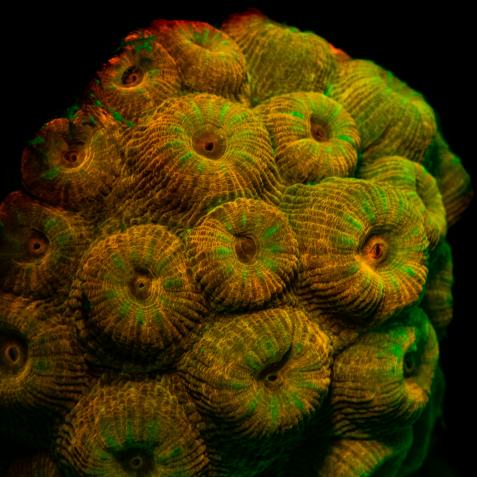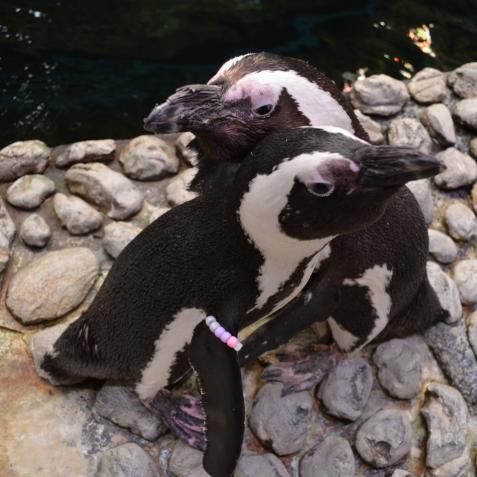
Georgia Aquarium
Sea Otters Play and Grow at Georgia Aquarium
When visiting Georgia Aquarium, you may see our southern sea otters playing with toy keys, Kongs ™, and carwash kelp, or maybe you’ve seen them lounging in a kiddie pool filled with ice. These are all environmental enrichment devices and are essential to the care and health of our animals.
Enrichment is any item introduced to an animal’s environment to mentally stimulate and physically challenge the animal. These devices are used to encourage natural behaviors the animal would exhibit such as searching for food and investigating surroundings.
Our zoological operations staff chooses or creates these devices and places them inside the habitats for the animals to interact with and manipulate. You may see some of our southern sea otters playing with different toys, or Kongs ™, which you might recognize as a popular dog toy. Trainers put food inside to help the sea otters practice their foraging skills. Strips of material are also used to simulate kelp in the southern sea otter habitat. This “kelp” is made of the same material used to wash cars!
Southern sea otters aren’t the only animals in our care who receive enrichment. Our dolphins and penguins enjoy non-toxic bubbles; food-filled balls provide a challenge for our giant Pacific octopus. Sometimes we get creative with enrichment devices! Our animal care team built a raft that floats for our Asian small-clawed otter habitat and the otters swim around the raft or climb up on top and take a nap. You may have also seen our beluga whales swimming alongside buoys or pushing them through the water in their habitat.
It's a Winter Waterland at Georgia Aquarium
Get in the Holiday Spirit in this Winter Waterland 11 Photos
It’s a Winter Waterland at Georgia Aquarium! Did you know these bubbles, ice, and candy cane toy are enrichment items for their dolphins? Plus the sea otters get holiday treats too. Enrichment items help to stimulate animals physically and mentally.
Training is also a form of enrichment. During training sessions, our animal care staff work directly with our animals using positive reinforcement to establish bonds and teach behaviors. Positive reinforcement comes in many forms and can depend on the animal. Some our animals, like our beluga whales, like tongue rubs or melon rubs. Other animals, like our southern sea otters have favorite foods like crab or clams. Food is also an important part of the care of our animals and their nutrition is carefully monitored and assessed by one of the only full-time nutritionists on staff at a zoo or aquarium.
Enrichment is a vital part of animal care at Georgia Aquarium. Our animals enjoy the mental and physical stimulation almost as much as we enjoy watching them play and grow!



















